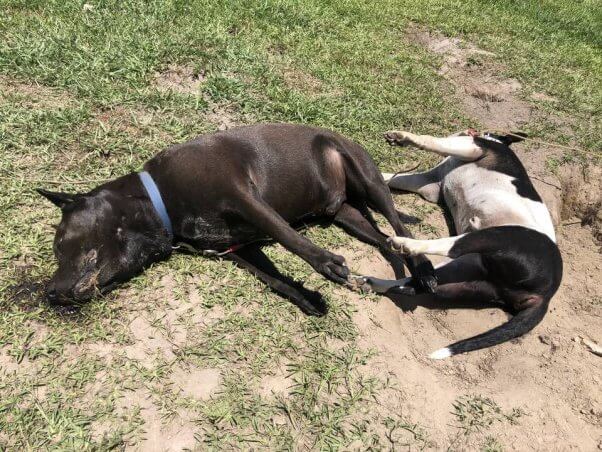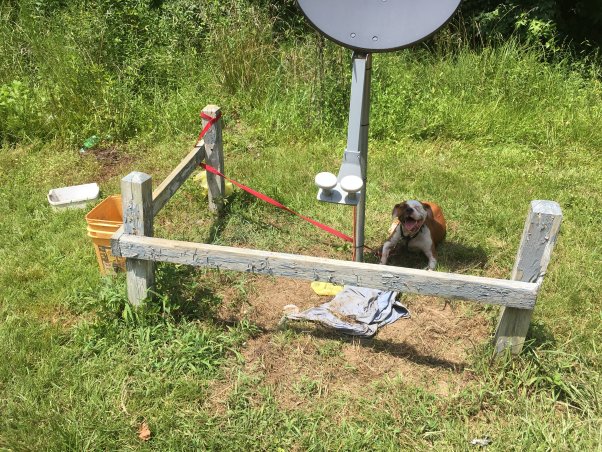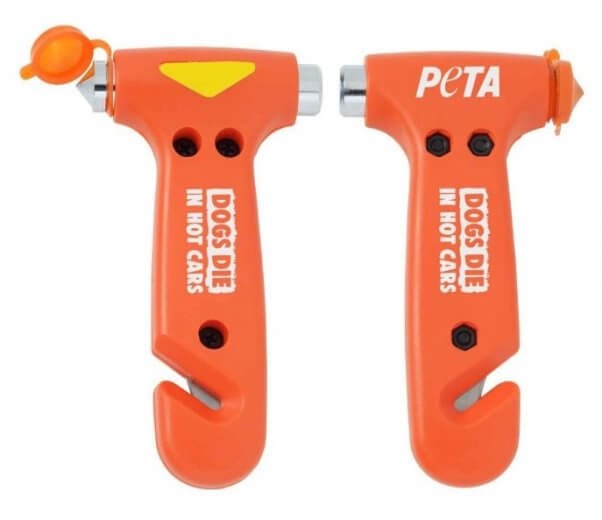Knowing the Signs of Heatstroke Could Save a Dog’s Life
Heat waves and high summer temperatures are rocking the country now more than ever, and the consequences are proving deadly. In addition to children and elderly humans, dogs face an increased risk of suffering (and even dying) from heat-related injuries. Maybe you’ve seen tips about keeping dogs indoors or rescuing dogs left alone in parked cars, but you may be wondering how dogs actually die of heatstroke. Knowing the signs and symptoms of heatstroke in dogs could help you make a lifesaving decision to take action when the situation is dire.
Extreme Heat Is Deadly for Dogs (GRAPHIC)
In one rural North Carolina county where dogs are commonly kept chained outdoors 24/7, PETA’s dedicated fieldworkers recently found three dead dogs in the span of four days.
The bloated, stiff bodies of two young pit bulls were still tangled in their tethers when a PETA fieldworker discovered them.

Although their owner had died a few days prior, her daughter claimed to have checked on the pair earlier that day. Yet both dogs remained outside—tangled and unable to reach water or shade as the sweltering temperatures climbed into the triple digits. Their frantic cries for help were ignored, and they likely desperately gasped for air before finally succumbing to heatstroke.
Just three days earlier, while giving fresh water and flea-preventive medication to a dog at another property, a fieldworker noticed a foul stench coming from the doghouse of a female pit bull.
The door to the doghouse was nailed over with a plank of wood. While the owner’s bedridden wife told us that she didn’t know why the doghouse had been boarded shut, our fieldworker made a horrifying discovery inside it: the decomposing remains of a dog liquefying and covered with maggots.

Our fieldworkers quickly contacted local sheriff’s officials after finding these three victims of neglect and summer heat, and today, we’re urging leaders of that rural county to enact an emergency ordinance prohibiting unattended chaining of dogs.
WATCH: This neglected dog visited by PETA staffers was so hot that she drank water for nearly three minutes straight.
PETA staffers regularly find dogs forced to live outdoors in all weather extremes, many with inadequate food, water, and shelter from the elements.
You can help dogs like these by sponsoring a PETA doghouse today. Another effective way to help “backyard dogs” all year long is to work with elected representatives to pass ordinances that ban or restrict chaining. A strong chaining ordinance can keep dogs safe from both hot and cold weather, and it helps ensure that dogs are more properly socialized and in better psychological health. If you want to get involved in making a difference, be sure to check if your area has a chaining ordinance in place, and learn how to start taking action. PETA even offers free resources to help you get started.
To learn more about helping dogs suffering in the heat—even saving their lives—keep reading.
Signs of Heatstroke in Dogs
Dogs’ resting body temperature is already higher than that of humans, and their primary means of shedding body heat is through panting. But as the temperature and humidity outside rise, this method of cooling becomes less and less effective, and they can experience multisystem organ failure, which leads to these symptoms, among others:
- heavy panting
- heavy salivation
- incontinence
- vomiting
- diarrhea
- urinating blood
- difficulty breathing
- collapse
- seizures
- loss of consciousness
Other warning signs of heatstroke include a darkened tongue, rapid heart rate, and glassy eyes.
There are several factors that affect how quickly dogs overheat, besides the ambient temperature and humidity, including their activity level, age, and overall health; the thickness of their fur; and even the shape of their head. Did you know that brachycephalic (“flat-faced”) breeds are prone to overheating more quickly than other dogs as a result of their breathing problems? Or that dogs can also get heatstroke (or burn their paws) from everyday activities like running, walking, or playing? But regardless of these factors, any overheated dog can sustain brain damage and even die within minutes.
Dogs exhibiting symptoms should be taken into an air-conditioned space or the shade immediately and offered water. They must be taken to a vet as soon as possible. If you’re waiting for authorities to arrive, you can attempt to lower the dog’s body temperature by applying a lukewarm or cool (not cold) towel to the head and chest while you wait. If someone is with you, one person can perform these actions in the car as the other drives you to a veterinarian.
The longer dogs experience hyperthermia (high body temperature), the more likely they are to die as a result of it. Many dogs who receive emergency treatment still do not survive.
What to Do if You See a Dog in Hot-Weather Danger
Whether left in a parked car or kept chained up or penned outdoors, dogs unable to escape the heat are in danger. If you see a dog in distress, consider it an emergency and take action right away!

On a 70-degree day, the temperature inside a parked car can soar to 99 degrees in 20 minutes, and on a 90-degree day, the interior temperature can reach as high as 109 degrees in just 10 minutes. Dogs don’t sweat and must cool themselves primarily through panting, so they can rapidly succumb to heatstroke even if a vehicle is parked in the shade with the windows slightly open, which has little to no effect on lowering the temperature inside.
If you see a dog in a hot car, call 911 immediately. While you’re waiting for the police to arrive, write down the car’s make, model, and license plate number, or take a picture of the vehicle and go to the nearest building to find a manager and ask that the owner of the car be paged. If authorities are unresponsive or too slow to respond and the animal’s life appears to be in imminent danger, find a witness who will back up your assessment before carefully removing the animal from the car and carrying him or her into the shade or an air-conditioned space. PETA offers an emergency window-breaking hammer for help with intervening in these life-or-death situations. Don’t leave until the authorities arrive on the scene and you know that the dog is safe.

PETA’s fieldworkers routinely find dogs who are chained or penned outdoors without water or adequate shade during hot weather, even though it puts their lives in danger. If you see a “backyard dog” in distress and are unable to help directly, take note of the location and contact authorities immediately. Anyone who leaves animals outside to suffer in severe weather can be prosecuted for cruelty.




